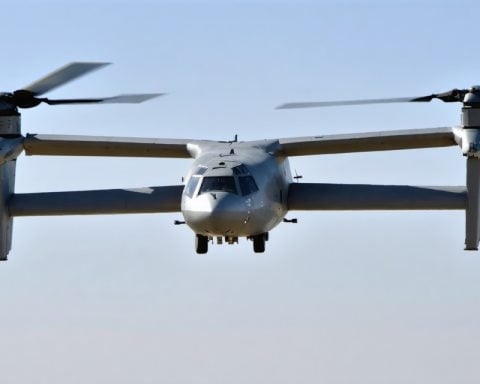- Quantum computing is rapidly evolving with D-Wave Systems leading the charge in quantum annealing technology.
- D-Wave’s focus on quantum annealing offers unique solutions for complex problems beyond the capabilities of classical computers.
- The Advantage 2 Quantum Computer, with over 5000 qubits, marks a substantial improvement in computational power and precision.
- D-Wave enables global access to quantum computing through its cloud-based service, promoting widespread innovation.
- As quantum computing advances, D-Wave is instrumental in making the seemingly impossible both conceivable and attainable.
The realm of quantum computing is rapidly evolving, and at the forefront of this revolution is D-Wave Systems, a pioneer in developing quantum annealing technology. As traditional computers hit the ceiling of Moore’s Law, D-Wave offers a new horizon that promises exponential growth and efficiency.
Unlike its counterparts, D-Wave’s approach is distinctive due to its focus on quantum annealing, a method advantageous for optimizing complex problems that classical computers struggle with. From logistics and climate modeling to advanced material science, quantum annealing has the potential to solve intricate challenges by navigating a myriad of possibilities simultaneously.
What makes D-Wave unique is their recent leap forward with the Advantage 2 Quantum Computer, which boasts over 5000 qubits—a significant increase in qubit capacity, enhancing its computational power and precision. This breakthrough opens doors for scientists and technologists to explore avenues previously considered out of reach.
Moreover, D-Wave is not just advancing technologies but democratizing them. Through their cloud-based service, they’re enabling industries and academic institutions worldwide to experiment and innovate on a quantum scale, fostering a global ecosystem of quantum exploration.
As the world stands on the brink of a quantum revolution, D-Wave’s advances herald a new era where the seemingly impossible is not just conceivable, but attainable. The question is not whether quantum computing will redefine technology, but how quickly and profoundly it will reshape our future.
Revolutionizing Problem Solving: How D-Wave Systems is Pioneering Quantum Innovation
What are the key advancements of D-Wave’s Advantage 2 Quantum Computer?
D-Wave’s Advantage 2 Quantum Computer marks a substantial leap in the realm of quantum computation. It features over 5000 qubits, which is a significant increase from previous generations. This increased qubit capacity allows for enhanced computational power and precision, enabling the solution of more complex problems that were previously out of reach. With these advancements, researchers and scientists can explore new frontiers in logistics, climate modeling, and material science, pushing the boundaries of what’s possible with quantum computing.
How does D-Wave’s quantum annealing technology differ from other quantum computing approaches?
Quantum annealing, the technology underpinning D-Wave’s systems, specializes in tackling optimization problems where classical computers fall short. Unlike quantum gate systems, quantum annealing focuses on finding the minimum energy state in a complex landscape, making it uniquely suited for various applications such as logistics, scheduling, and artificial intelligence tasks. Its ability to explore numerous possibilities simultaneously gives it a distinctive advantage in optimizing intricate problems, setting it apart from other quantum computing approaches like gate-based quantum computing.
What are the potential applications and limitations of D-Wave’s quantum computing technology?
Applications:
1. Logistics: D-Wave’s systems can optimize routes and supply chains, improving efficiency and reducing costs.
2. Climate Modeling: Enhanced simulation capabilities help in understanding and mitigating climate change impacts.
3. Material Science: Quantum annealing allows for the discovery of new materials with desired properties, accelerating innovation in various industries.
Limitations:
1. Specialization: Quantum annealing is best suited for optimization, which may not address all quantum computing needs.
2. Environmental Sensitivity: Qubits can be unstable and sensitive to environmental disturbances, requiring advanced error correction methods.
3. Integration with Classical Systems: Bridging quantum and classical infrastructure remains a technical challenge that researchers are continually addressing.
For more information on quantum computing and its developments, visit DWAVE.
D-Wave: Leading Quantum Innovation and Insights
As D-Wave continues to innovate and push the limits of what quantum computing can achieve, interested parties in the tech industry and academia are encouraged to explore its latest offerings. With democratized access through cloud services, the possibilities for experimentation and discovery are within reach for many. The ever-evolving landscape of quantum computing promises a future where optimization problems and complex scenarios are no longer obstacles but opportunities for innovation.

















